calsfoundation@cals.org
Graysonia (Clark County)
Graysonia of Clark County was one of numerous mill towns that sprang up in southern Arkansas during the twentieth century as a result of Arkansas’s growing timber industry. At its peak, Graysonia had one of the largest mills in the South and a thriving community. Today, few visible remainders of the town exist.
In 1902, William Grayson and Nelson McLeod became principal stockholders in Arkadelphia Lumber Company. The company moved to a site near the Antoine River in 1907 because there were not enough resources in the area to continue at their former location. The new town was named Graysonia, in honor of the company’s president.
The mill at Graysonia became one of the South’s largest due to the high lumber demands brought on by World War I. The mill especially prospered between 1915 and 1920. More than 500 employees worked to produce 150,000 board feet each day. This was substantially more than other mills, such as the one at Mauldin (Montgomery County), which produced 25,000 board feet each day at top speed.
At its founding, 350 people lived in the town. Population more than doubled during the town’s peak. Graysonia was a company-owned town but was different from many other company-owned towns in Arkansas because it incorporated and elected its own government officials. In addition to a large commissary, the town boasted luxuries such as a confectionary, a movie theatre, three hotels, a school, and a church. It had a water system, as well as electric services.
In 1924, the Bemis family bought into the company, and it was renamed the Ozan-Grayson Lumber Company. The Bemis family operated other area mills, and this merger marked the beginning of five successful years of lumber production.
Graysonia’s decline was due in large part to lumber companies’ “cut and move” mentality, which means that they took timber from the land and moved to another area with more resources. However, this was not the only reason for the town’s abandonment.
In 1929, the Great Depression swept the country. The mill at Graysonia held on for a time, but by 1931, the burden of the Depression and a lack of timber became too great. The planer mill lasted for a while by cutting stored lumber, and management considered operating several small mills to continue production. However, the financial situation worsened, and the mill closed.
Cinnabar, an ore from which mercury is extracted, was discovered in southwest Arkansas in 1930. Mill workers were encouraged to stay in Graysonia and work for the Arkansas Quicksilver Company. However, cinnabar mining also began to dwindle, and people started moving away from the town. Workers found jobs in other mills or mines, and the town became deserted. The Ozan-Grayson directors reported to stockholders that the land was worthless, not worth the tax burden to keep it. The Bemises decided to sell 10,000 acres of the land to the McMillan family, traders in timberlands from Arkadelphia. With the remaining 50,000 acres, they built a mill in Delight (Pike County) in 1937, using some of the equipment from the Graysonia mill.
On November 19, 1950, the Graysonia post office closed down and routed its mail through Alpine (Clark County). In that same year, the U.S. Census listed the population of Graysonia to be zero.
For additional information:
“Memories of Graysonia.” Clark County Historical Journal 1 (Spring 1974): 38–48.
Richter, Wendy, ed. Clark County, Arkansas: Past and Present. Arkadelphia, AR: Clark County Historical Association, 1992.
Smith, Kenneth L. Sawmill: The Story of Cutting the Last Virgin Forest East of the Rockies. Fayetteville: University of Arkansas Press, 1986.
Ouachita Baptist University
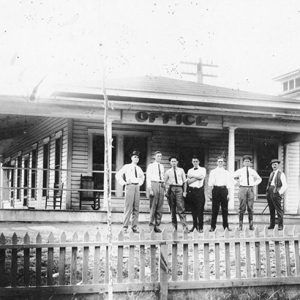 Arkadelphia Lumber Company
Arkadelphia Lumber Company 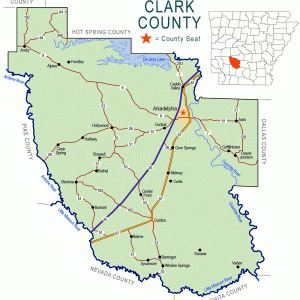 Clark County Map
Clark County Map 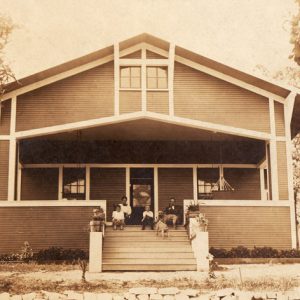 Grayson House
Grayson House  Graysonia; circa 1912
Graysonia; circa 1912 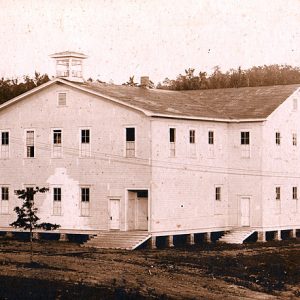 Graysonia School
Graysonia School 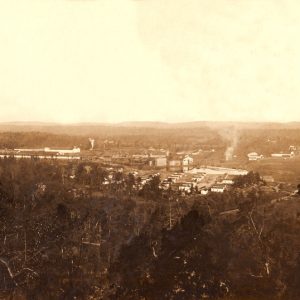 Graysonia
Graysonia 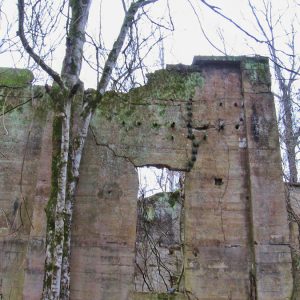 Graysonia Mill Ruins
Graysonia Mill Ruins 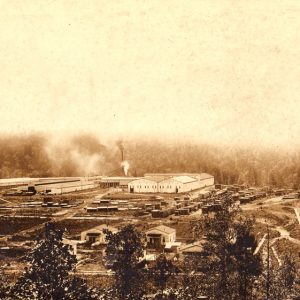 Graysonia Timber Mill
Graysonia Timber Mill 



My great-grandmother, Eliza Hernando Roberts, was the mail carrier for Graysonia for many years. She would awaken at 4 a.m., heat stones for her cold buggy ride, and hitch up her blind horse. She traveled at least 6 miles to pick up the mail and 6 miles back to deliver it each day. She also grew vegetables in her garden and sold them to the people on her mail route for a little extra income. She was the sole provider for her many children. At age fifty-two, she married Mr. Bryant, who moved into the farmhouse and took over the farm duties for her. Throughout their entire marriage, he referred to her as Ma Bryant and she called him Mr. Bryant. One of her sons is buried in the small Graysonia cemetery that still exists today. She was an extremely kind, hardworking woman who was a pillar of the Graysonia community. I returned yesterday from taking my father (from Michigan) to what is left of Graysonia in search of the old farmhouse his beloved grandmother owned. The roads to Graysonia are gated now, but one of his remaining cousins from Delight showed us the “secret” way in the road they take to visit the old town and cemetery. The schools nearby closed that day due the flooding from the pouring rain. We did not take it seriously when we started the trip down the winding roads to Graysonia but soon realized we were taking a risk. We made it to the cemetery, but rushing waters and a washed-out road forced us to turn around and take the Alpine road to civilization. The area is dense with trees and deer. What an experience to allow my father to step on the land he played on as a small child.
11/22/18: I have been told, although I have not had the opportunity to verify, that the present property owner has taken down the standing structures on the mill site. I do know the property was sold a couple of years ago and there was a locked gate erected at the “main road” entry.
My mother, Frankie Jane Williams (Faulkner), was born in Graysonia and is still alive today (03/06/2015 – 81 years old). Many of her brothers and sisters (16 total family members) were born in Graysonia. My grandfather Joseph Hardy Faulkner delivered ice and various other goods to the residents there and kept a ledger of those to whom he delivered. My mother has that ledger. Frankie resides in Delight, Arkansas, where the family moved after leaving Graysonia sometime around 1935.